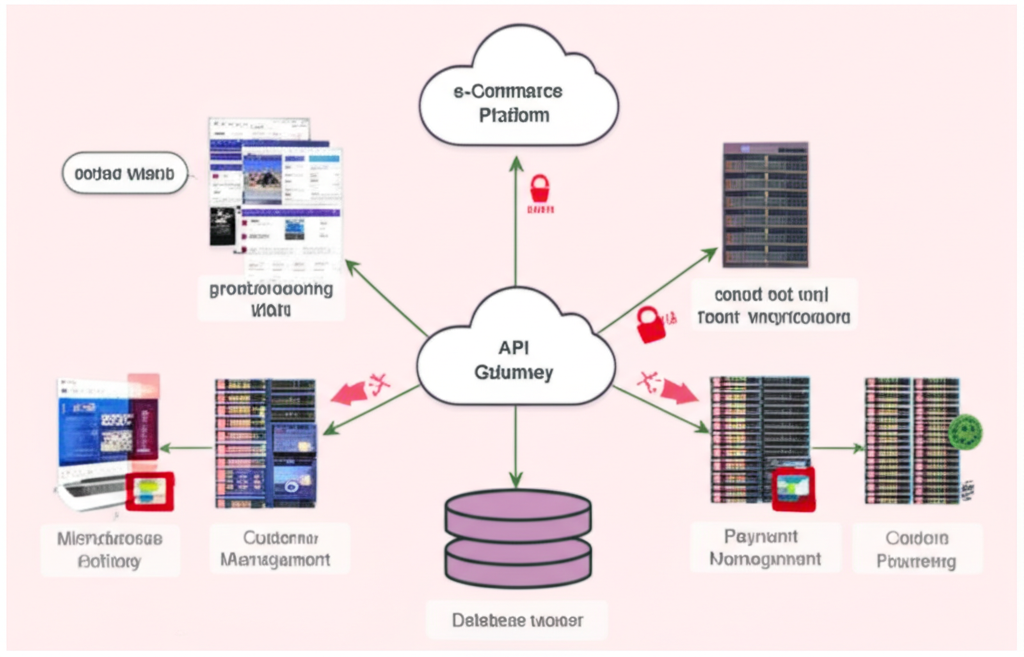E-Commerce Platform Optimization

The Challenge
A rapidly growing e-commerce platform with over 5 million monthly active users was experiencing significant performance issues during peak shopping periods. The platform was struggling with:
- Slow page load times during high-traffic events like flash sales and holiday seasons
- Database bottlenecks causing transaction failures
- Unpredictable scaling costs with their existing architecture
- Limited ability to deploy new features during peak seasons
The company needed a complete overhaul of their cloud architecture to handle 10x more traffic during peak periods while maintaining performance and controlling costs.
Our Approach
We worked closely with the e-commerce platform's engineering team to redesign their cloud architecture for optimal performance, scalability, and cost-efficiency. Our approach included:
1. Performance Assessment
We conducted a comprehensive assessment of the existing architecture, identifying bottlenecks, inefficiencies, and opportunities for improvement. This included:
- Load testing to simulate peak traffic conditions
- Database query optimization analysis
- Resource utilization monitoring
- Cost analysis across all cloud services
2. Microservices Architecture
We redesigned the monolithic application into a microservices architecture, breaking down the system into smaller, independently deployable services. This approach enabled:
- Independent scaling of different components based on demand
- Improved fault isolation and resilience
- More efficient resource utilization
- Faster feature development and deployment
3. Database Optimization
We implemented a multi-tier database strategy to address the database bottlenecks:
- Implemented read replicas for high-traffic read operations
- Added caching layers for frequently accessed data
- Sharded databases for improved write performance
- Optimized query patterns and indexes
4. Auto-scaling Infrastructure
We designed and implemented an auto-scaling infrastructure that could dynamically adjust to traffic patterns:
- Predictive scaling based on historical traffic patterns
- Event-driven scaling for flash sales and promotions
- Cost-optimized instance selection and spot instance usage
- Multi-region deployment for improved global performance
The Results
The cloud architecture optimization delivered significant improvements in performance, scalability, and cost-efficiency:
10x
Increase in peak traffic handling capacity
65%
Improvement in average page load time
30%
Reduction in cloud infrastructure costs
99.99%
System availability during peak events
Beyond the metrics, the optimization enabled the e-commerce platform to:
- Launch new features continuously, even during peak seasons
- Expand into new geographic markets with localized performance
- Implement more sophisticated personalization and recommendation systems
- Reduce time-to-market for new features by 40%
Technical Implementation
The technical implementation of the cloud architecture optimization included:
Containerization and Orchestration
We containerized the application using Docker and implemented Kubernetes for orchestration, providing:
- Consistent deployment environments across development and production
- Efficient resource utilization and bin packing
- Automated scaling, deployment, and rollbacks
- Self-healing infrastructure that automatically replaces failed components
Content Delivery Optimization
We implemented a multi-layered content delivery strategy:
- Global CDN for static assets with automatic edge caching
- Image optimization and responsive delivery pipeline
- Dynamic content caching with invalidation strategies
- Progressive web app techniques for offline capabilities
Conclusion
This case study demonstrates how a strategic cloud architecture optimization can transform an e-commerce platform's performance, scalability, and cost-efficiency. By implementing a microservices architecture, optimizing databases, and designing an auto-scaling infrastructure, we helped the platform handle 10x more traffic during peak periods while improving performance and reducing costs.
The optimization not only solved the immediate performance challenges but also provided a foundation for future growth and innovation, enabling the e-commerce platform to continue expanding its customer base and feature set without being constrained by technical limitations.


